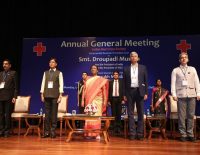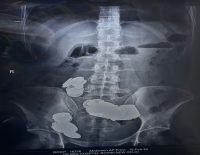WHO releases Bacterial Priority Pathogens List (BPPL) 2024

The World Health Organization (WHO) on Saturday released the updated Bacterial Priority Pathogens List (BPPL) 2024, highlighting 15 families of antibiotic-resistant bacteria categorized into critical, high, and medium priority groups.
The list has been released to guide the development of new treatments to combat the spread of antimicrobial resistance (AMR). AMR occurs when bacteria, viruses, fungi, and parasites become resistant to medicines, making infections harder to treat and increasing the risk of disease spread, severe illness, and death. Misuse and overuse of antimicrobials significantly contribute to AMR. The updated BPPL integrates new evidence and expert insights to direct research and development (R&D) for new antibiotics and enhance international coordination for fostering innovation.
BPPL 2024 also emphasizes the need for a comprehensive public health approach to addressing AMR. This includes universal access to quality and affordable measures for prevention, diagnosis, and appropriate treatment of infections, as outlined in WHO’s People-centred approach to addressing AMR and core package of AMR interventions. Such measures are vital for mitigating AMR’s impact on public health and the economy.
“By mapping the global burden of drug-resistant bacteria and assessing their impact on public health, this list is crucial for guiding investment and addressing the antibiotics pipeline and access crisis,” said Dr. Yukiko Nakatani, WHO’s Assistant Director-General for Antimicrobial Resistance ad interim. “Since the first Bacterial Priority Pathogens List was released in 2017, the threat of antimicrobial resistance has intensified, reducing the effectiveness of numerous antibiotics and jeopardizing many achievements of modern medicine.”
Critical priority pathogens, including gram-negative bacteria resistant to last-resort antibiotics and rifampicin-resistant Mycobacterium tuberculosis, pose major global threats due to their high burden and ability to resist treatment and spread resistance to other bacteria. Gram-negative bacteria are particularly adept at developing new resistance mechanisms and sharing genetic material that confers drug resistance to other bacteria.
High priority pathogens, such as Salmonella and Shigella, have a significant burden in low- and middle-income countries, and pathogens like Pseudomonas aeruginosa and Staphylococcus aureus present major challenges in healthcare settings.
Other high priority pathogens, such as antibiotic-resistant Neisseria gonorrhoeae and Enterococcus faecium, pose unique public health challenges due to persistent infections and resistance to multiple antibiotics, necessitating targeted research and public health interventions.
Medium priority pathogens include Group A and B Streptococci (new to the 2024 list), Streptococcus pneumoniae, and Haemophilus influenzae, all of which carry a high disease burden. These pathogens need increased attention, especially in vulnerable populations, including children and the elderly, particularly in resource-limited settings.







